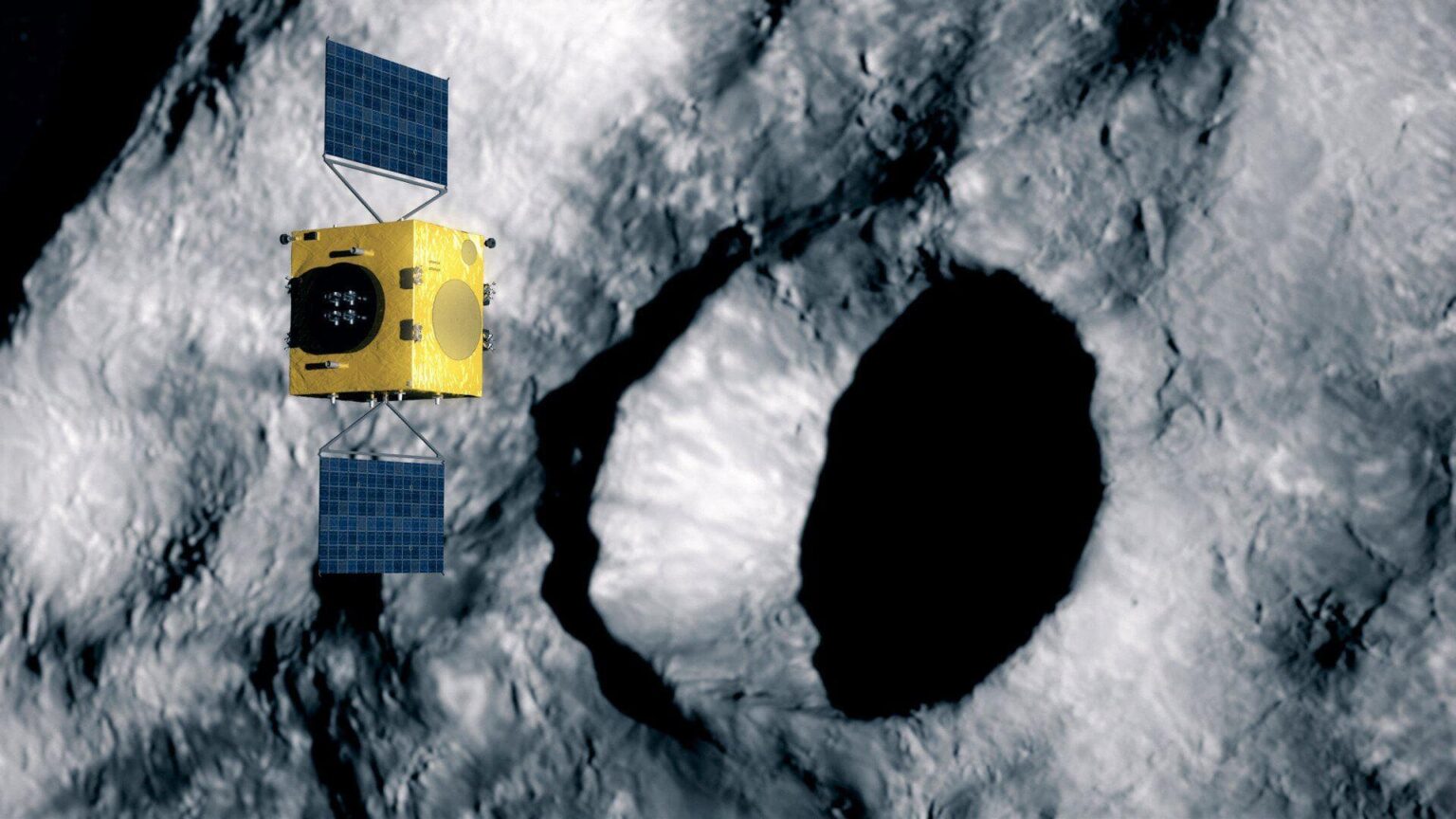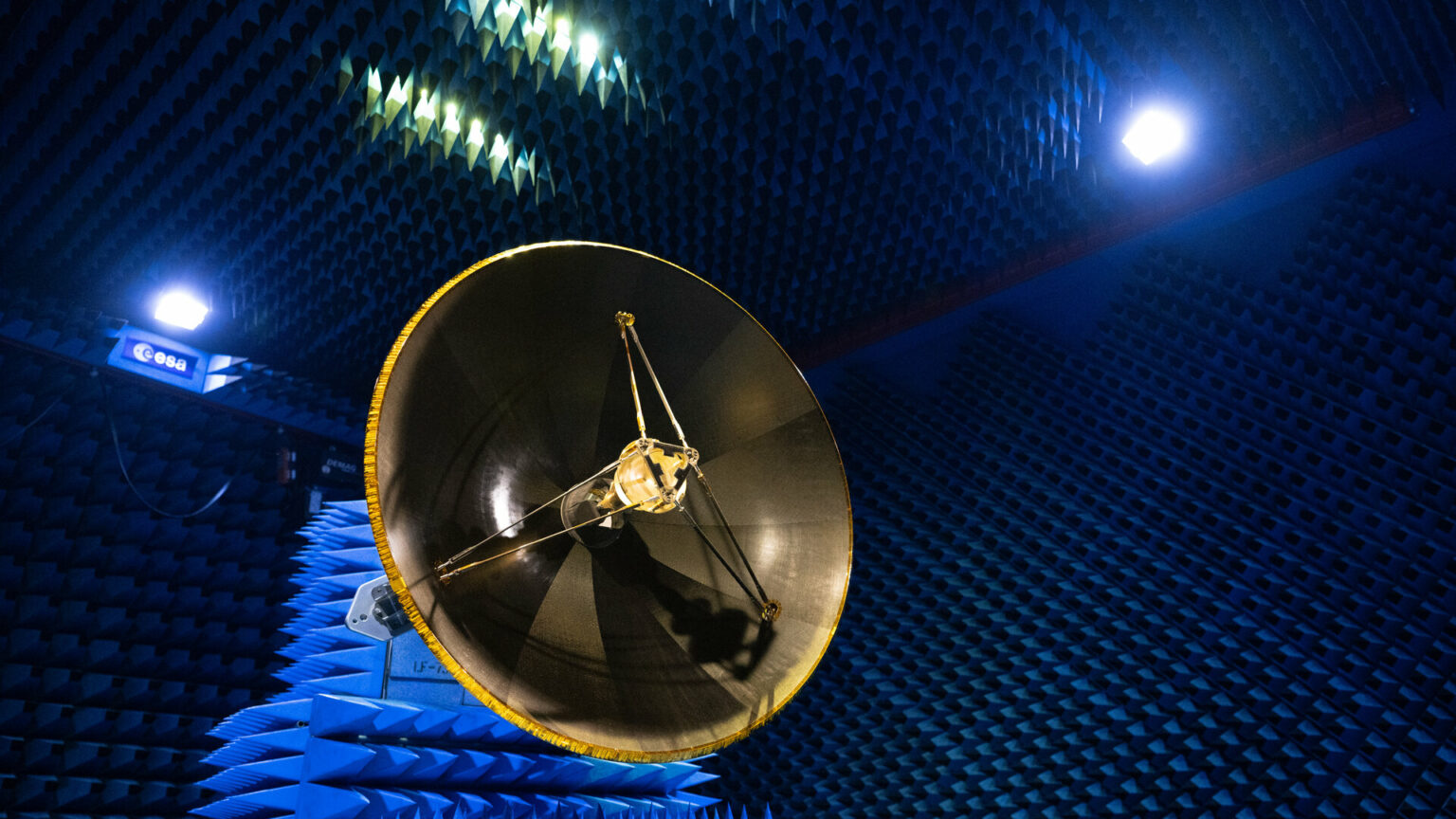The European Space Agency (ESA) has published a picture taken inside the ESTEC test chamber. The image shows the antenna that will be installed on the interplanetary probe Hera.
Hera Mission Tasks
The main target of the Hera mission will be the asteroid Dimorphos, which is a satellite of the larger asteroid Didymos. On September 22, 2022, the DART probe built by NASA crashed into Dimorphos. The impact knocked out at least a thousand tons of matter from its surface, which led to a change in the orbital period of the small body by 32 minutes.

Of course, scientists would like to know as much as possible about how the collision with DART affected the pair of asteroids. They are also very interested in the crater left by the impact. Its study will help to shed light on the internal structure of Dimorphos and will allow the analysis of matter from the depths of the asteroid. This is the Hera mission. The probe will enter a permanent orbit around a pair of asteroids and conduct a comprehensive study of them.
The antenna of the Hera probe
European engineers are already engaged in testing Hera components. One of them is a 1.13 meter high gain antenna. It is an enlarged version of the antenna that was installed on the Euclid telescope. The difference in size is explained by the fact that Euclid will operate at a distance of 1.5 million km from Earth, while the signal from Hera will have to overcome 400 million km. The antenna will amplify it 4,000 times, which will allow scientists to receive the data collected by the mission.

Despite its large size, the Hera antenna weighs only 7.5 kg. Its reflector is made of carbon fiber, which provides stability and resistance to the extreme temperatures it will be exposed to in space.
The Hera antenna is currently undergoing electromagnetic tests to confirm that its characteristics meet the mission parameters. After their completion, a series of vibration and thermal tests will begin in Germany and Austria. The antenna will then be returned to ESTEC to certify that these tests have not affected its performance. Later, it will be installed on the spacecraft. The launch of the Hera mission is currently scheduled for October 2024.
Based on materials from https://www.esa.int

